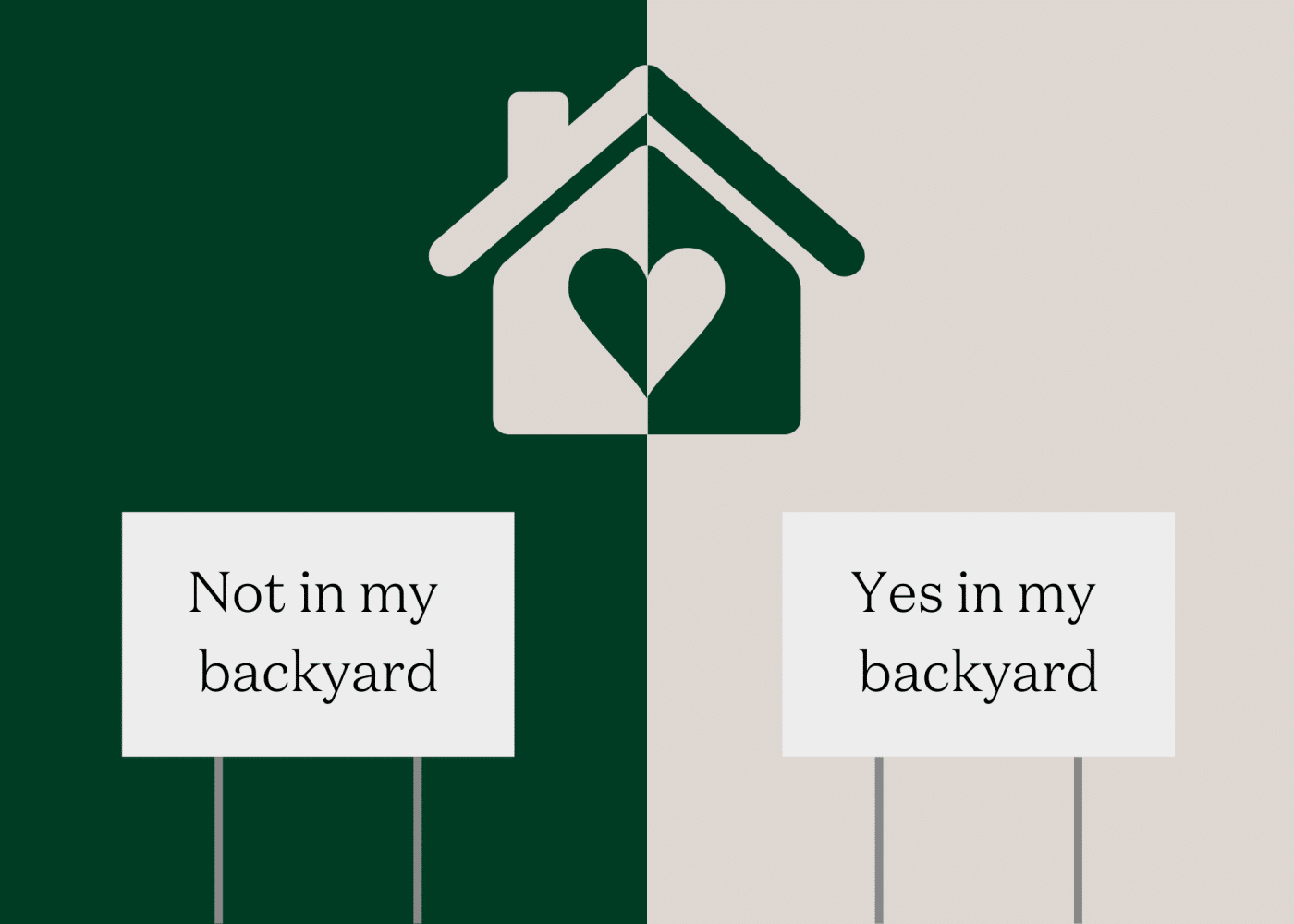
If you’ve (digitally) picked up a newspaper, or watched the news so far this year you would have likely seen that the head-to-head between NIMBY’s and YIMBY’s is getting a lot of air time. But what does this mean, should you care and how does it affect the value of your property?
NIMBY = Not In My Back Yard
Essentially a NIMBY is described as a cohort who are against proposed planning changes such as infrastructure, developments, higher density housing, changes to land classification/zoning or any significant change in their local area. Typified by older Australians, though not exclusively, fear of change to the fabric of their suburb and perceived inappropriate or over – development tends to be a major driving factor for this group.
Which leads us to YIMBY’s.
YIMBY = Yes In My Back Yard
YIMBY’s take a different approach being they are supportive of change and generally advocate for housing development and the easing of restrictive zoning and planning. The focus in this cohort is on increasing housing supply (not necessarily social or affordable housing, just more housing near established infrastructure and amenity).
There are lots of ways this can be achieved, primarily through building more houses, townhouses and apartments on smaller blocks of land but importantly their main ethos is lower density apartments and townhouses right along major transport lines – for instance, up to 5 stories would be approved spanning the inner-city ring of about 5- 7 kms from the cbd within a 1km of major train lines. This means councils approving subdivisions and apartment developments in areas where traditionally the densification rather than extreme heights in certain hubs and single dwelling caveats in others.
What’s going to be better for your property portfolio?
Now this is an interesting question. Generally speaking, higher density living is not necessarily conducive to greater or faster property growth. Free standing/detached property on land tends to return greater capital growth (and faster) than apartments. However, apartments/units/townhouses can come in many different formats and each of these assets performs differently in the market, despite all being classed as “units”.
At this point it’s important to take a step back and look at the differences in high, medium and low-density property.
High density are heavily populated and small internal footage traditionally set in high-rise towers. You typically see in places like Docklands, the CBD and South Yarra. We’ve had people come to use seeking to sell their high-density apartment, who are unfortunately in a negative equity position even five years later, and simply cannot get their money back after their initial purchase.
Medium density is akin to smaller blocks of apartments and townhouses with three to four dwellings on the block, typically with larger and more generously apportioned floorplans and access to things like courtyards and balconies.
Low density is of course when there is only one standalone, detached house on the property.
With these definitions in mind, property development with a focus on higher density could potentially be a double-edged sword. Whilst it benefits by opening more living options at potentially lower price points, it may not be the boon many house buyers need it to be in order to leverage their financial position.
As evidenced by the example above, whilst they are cheaper to buy into, these types of apartments don’t tend to hold their value as well or grow in value expeditiously when compared to detached housing. They also don’t typically attract families or long term occupants which is putting pressure on the urban sprawl. Ideally, we want to see a mixture of small and large format apartments, and townhouses to ensure the needs of the broader population are met limiting the need for greater urban sprawl which is costly and inefficient. However, when it comes to meeting the needs of a growing population who are balancing affordability with location, building better quality housing options is the way forward.
YOMT = Yes On My Terrace
There’s a raft of new developers in the market who are building apartments harking back to those of earlier years – rather than maximising density they are optimising lifestyle factors. These developments are purchasing freestanding homes in high end areas such as Malvern and Armadale, demolishing what was once a standalone house on 800sqm into six to twelve luxury large format apartments.
These high-end developments increase the density of the area they are built in, however do so in a way that is respectful, modern and often with a focus on environment sustainability as there are a range of requirements of new builds that don’t exist for older property.
They are not high density, the capital appreciation on these properties is significantly higher than seen in apartment towers. In many cases, these types of homes are a good downsize or Rightsize for mature couples who don’t need a big four or five bedroom home anymore but still require and desire more than a two bedroom apartment with a small balcony. This in turn frees up housing options for young families.
If we took all the properties in Victoria for instance and shook up who lived where, we technically have enough accommodation to satiate current demand. This demonstrates two things; we aren’t building what we need or what people want because we know there’s a strong resistance to downsizing and people are staying in their large family homes for longer than they should which is slowing down the ‘shake up’ of property ownership. In turn this means we’re not going to build enough of the right property types if we continue down the path of tower apartments and continued urban sprawl.
So, in principle, we agree that Yes, On My Terrace. Many people no longer want or need a large backyard but they don’t want to be 40km away from the CBD with limited amenity of transport either. Conversely most people aren’t going to be thrilled about living in a 2 bedroom shoebox with another 500 people crammed in the same apartment building. The way forward seems to be the in between and we’re not reinventing the wheel – it’s been done successfully in other cities and hopefully we see developers and planners taking inspiration from the right places.



